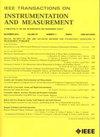Experimentally Validated Dynamic Equivalent Circuit Model of Perovskite Solar Cells: Utilizing Machine Learning Algorithms for Parameter Extraction Using I–V and C–V Characteristics
IF 5.6
2区 工程技术
Q1 ENGINEERING, ELECTRICAL & ELECTRONIC
IEEE Transactions on Instrumentation and Measurement
Pub Date : 2024-10-30
DOI:10.1109/TIM.2024.3488138
引用次数: 0
Abstract
This article presents a novel approach for parameter extraction and optimization of perovskite solar cells (PSCs) using a hybrid random forest (RF) machine learning model integrated with a neural network algorithm. We validated our model’s accuracy through experiments on a fabricated cesium lead chloride perovskite cell, characterizing it under one Sun conditions and diffused light injection. We compared the root-mean-square error (RMSE) of our model with experimental measurements and existing literature on perovskites. Additionally, we utilized measured C–V characteristics as inputs for a polynomial regression algorithm to extract C–V coefficients. Our results indicate a significant improvement in RMSE to 0.00016 with hyperparameter optimization (HPO), representing nearly a 90% enhancement over the equilibrium optimizer (EO) benchmark. Although the computational time for the ML model with HPO was approximately double that of the EO, the ML model without HPO still outperformed the EO by about 25% with only a modest increase in time. These findings underscore the effectiveness of hybrid machine learning approaches in optimizing PSC performance.经实验验证的 Perovskite 太阳能电池动态等效电路模型:利用机器学习算法提取 I-V 和 C-V 特性参数
本文介绍了一种新颖的方法,即使用一种集成了神经网络算法的混合随机森林(RF)机器学习模型来提取和优化包晶体太阳能电池(PSC)的参数。我们通过在一个太阳条件和漫射光注入条件下对制造的氯化铯铅包晶石电池进行实验,验证了模型的准确性。我们将模型的均方根误差(RMSE)与实验测量结果和有关包光体的现有文献进行了比较。此外,我们还利用测量的 C-V 特性作为多项式回归算法的输入,以提取 C-V 系数。我们的研究结果表明,通过超参数优化 (HPO),RMSE 显著提高到 0.00016,比平衡优化器 (EO) 基准提高了近 90%。虽然使用 HPO 的 ML 模型的计算时间约为 EO 的两倍,但不使用 HPO 的 ML 模型的性能仍比 EO 高出约 25%,只是时间略有增加。这些发现强调了混合机器学习方法在优化 PSC 性能方面的有效性。
本文章由计算机程序翻译,如有差异,请以英文原文为准。
求助全文
约1分钟内获得全文
求助全文
来源期刊

IEEE Transactions on Instrumentation and Measurement
工程技术-工程:电子与电气
CiteScore
9.00
自引率
23.20%
发文量
1294
审稿时长
3.9 months
期刊介绍:
Papers are sought that address innovative solutions to the development and use of electrical and electronic instruments and equipment to measure, monitor and/or record physical phenomena for the purpose of advancing measurement science, methods, functionality and applications. The scope of these papers may encompass: (1) theory, methodology, and practice of measurement; (2) design, development and evaluation of instrumentation and measurement systems and components used in generating, acquiring, conditioning and processing signals; (3) analysis, representation, display, and preservation of the information obtained from a set of measurements; and (4) scientific and technical support to establishment and maintenance of technical standards in the field of Instrumentation and Measurement.
 求助内容:
求助内容: 应助结果提醒方式:
应助结果提醒方式:


